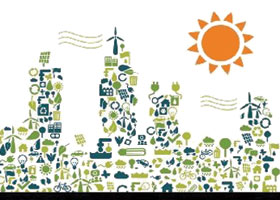Owning Your Energy
 It’s easy to feel helpless about home energy—as though for all you do to conserve it, you’ve got little control over how it’s produced and managed. Power from the People: How to Organize, Finance, and Launch Local Energy Projects (Community Resilience Guides)
It’s easy to feel helpless about home energy—as though for all you do to conserve it, you’ve got little control over how it’s produced and managed. Power from the People: How to Organize, Finance, and Launch Local Energy Projects (Community Resilience Guides) (Chelsea Green Publishing) by energy expert Greg Pahl wants to shift that paradigm, giving communities the tools to take control of their power supply—at least in part. The time could not be more urgent, he writes, as our dependency on oil will eventually create economic instability as resources run out and prices rise. In fact, Pahl writes, our entire energy model is largely unsustainable in the U.S., due to both to its dependency on fossil fuels and its inefficiency (“Only 32 percent of the energy used to generate electricity actually reaches the end user,” he writes.)
So what can we do? You can start, Pahl suggests, by being proactive about where you live—choosing a home that’s walking distance to work; conserving energy at home; adding solar panels to your roof and an efficient pellet-burning woodstove. Beyond these individual steps is community energy, or strategies to “provide energy security for local residents and businesses and long-term stability in local energy costs, all while providing local jobs and keeping energy dollars circulating in the local economy.”
These are collaborative projects and they can take many forms—a community-owned wind farm or photovoltaic installation or a local effort to reach certain efficiency standards. Pahl walks readers through the available tax credits and legal options and offers inspiring examples from around the country. These include the Ellensburg Community Solar Project in Washington, where residents made an initial contribution of $250 and up, “up to the point that their annual solar credit zeroes out their electric bill.” The panels are highly visible and the project has grown in four phases and rewards investors on their electricity bills. The panels have “generated more than 734,450 kilowatt-hours of electricity” since 2006.


